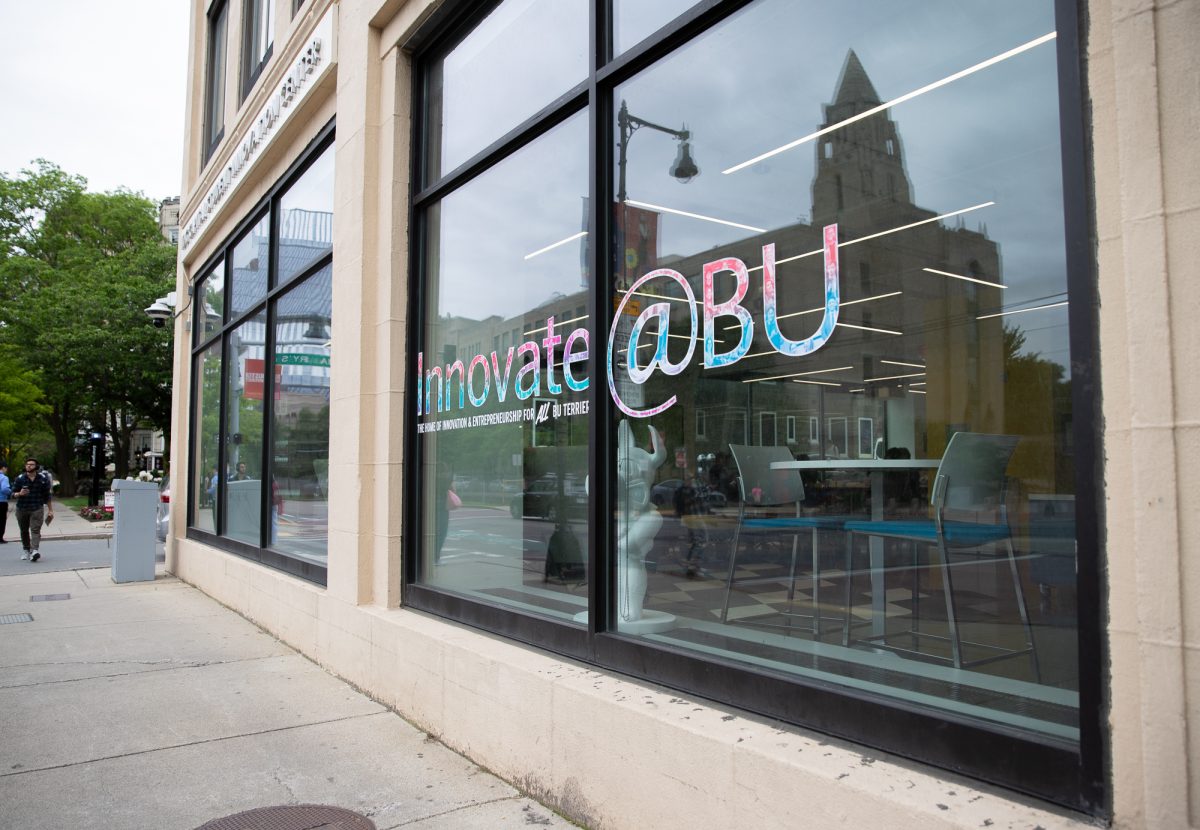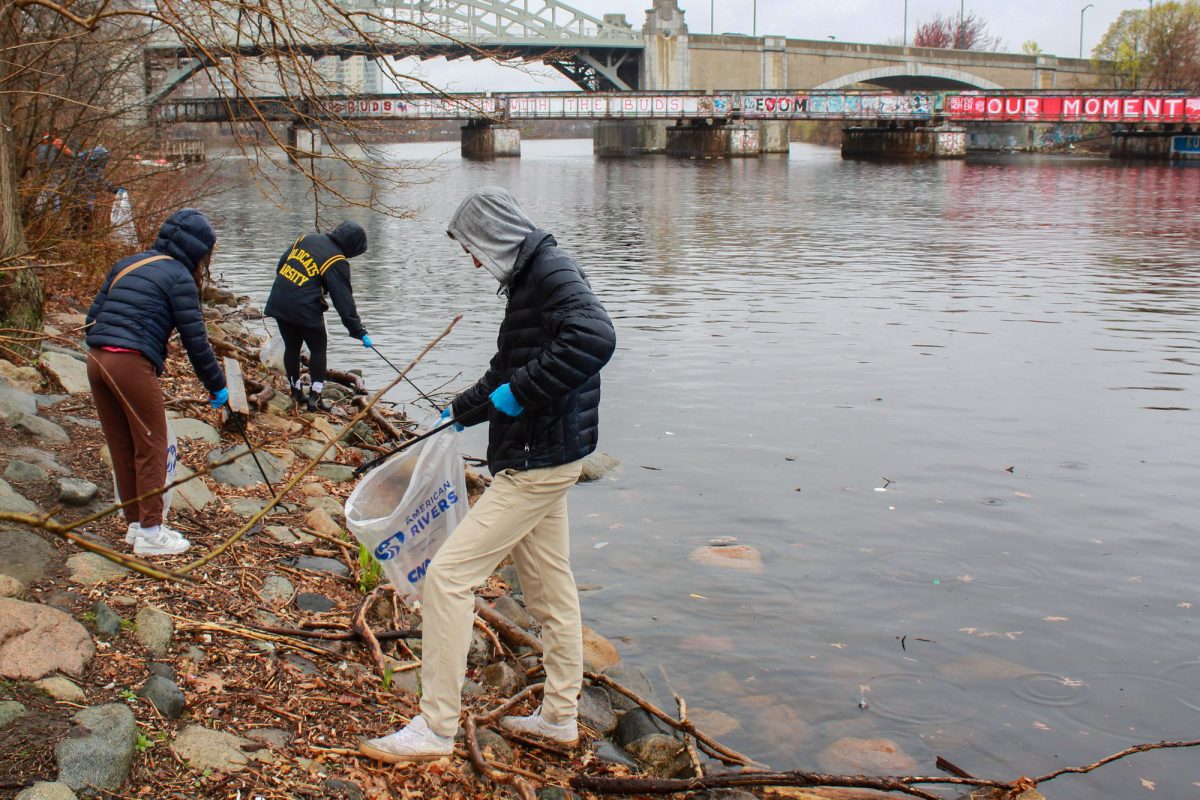Recent developments in the field of synthetic biology show not only that can we produce life, but also that we can produce it exactly the way we want to. No, this doesn’t mean you can predetermine your child’s athletic abilities or SAT scores, but if you’ve ever filled a gas tank, bought organic food or taken medicine, pay close attention — this research pertains to many of the organic materials we rely on every day and has important implications for the industries producing these materials.
Researchers have discovered safer, more effective ways of altering an organism’s genome, which is the set of genes that ultimately determines an organism’s functions and capabilities. In doing so, scientists will be able to develop better products in the biotechnology field, which includes industries such as biofuels and drug development.
Harvard University geneticist George Church and Yale University professor Farren Isaacs released their latest findings in an ongoing genome-recoding project in the journal Science on Oct. 17. The team of researchers collaborated with Donald Ingber, founding director at Harvard’s Wyss Institute for Biologically Inspired Engineering. Two parallel projects were designed to push the limits of genetic recoding, and they show that genomes can be highly manipulated by scientists in the biotechnology industry. Additionally, researchers worked to improve the safety of biotechnology by studying methods that increase virus resistance.
According to Isaacs’s lab website, researchers hope to apply their findings “to address global challenges in medicine, energy supply and the environment.” The new advancements are so groundbreaking and far-reaching that those goals may actually be achieved.
These newly released findings came from a large project that has been active for about six years. Although many researchers joined and then left the project, two renowned geneticists have remained constant: Professor Church and professor Isaacs. The earliest antecedent for this research is the work of BU’s own Jim Collins and Tim Gardner, who founded the field of synthetic biology.
What’s new in DNA
In order to change and expand an organism’s capability, researchers must work from the bottom up, which means altering DNA itself. DNA is responsible for all expression of genes, which are the segments of DNA that determine how the organism functions. Now picture that helical ladder model of DNA. The rungs of this ladder are called nucleotides, which are the basic units of DNA. Three consecutive nucleotides along the ladder make up a codon. Codons determine which proteins an organism’s cell will produce. Collectively, proteins perform all functions within an organism.
So, if researchers alter the codons, which are the smallest units responsible for protein production, it is possible that they can also alter what proteins are produced. Genetic modification is not a new field, but prior to this research, genetic changes had been made at the gene level rather than at the codon level. Isaacs and Church have worked on this approach since 2006, according to articles in online magazine Red Herring.
The first study
In the first study, researchers produced E. coli within a handpicked set of genes, collectively called the genome. To do this, they replaced all recurrences of a specific codon in the bacteria’s genome with a substitute, which allowed the organism to function normally. Then the removed codon was engineered to produce different proteins with different functions. This codon was reintroduced to the bacteria, and the new proteins were successfully produced.
The genome of the re-engineered bacteria was created using highly advanced tools, including one developed by Church himself called Multiplex Automated Genome Engineering, or “MAGE.” The technology makes it possible to make tiny adjustments to the organism’s DNA by replacing codons.
A codon is a set of three nucleotides — “nucleotides” being thymine, cytosine, adenine or guanine — represented by three corresponding letters. For example, ‘TAG’ (thymine-adenine-guanine) could be replaced by ‘TAA’ (thymine-adenine-adenine). Successful codon replacement increases the organism’s protein-producing capabilities, thus expanding its functions as a whole being. In this study, E. coli was able to produce virus-resistant proteins when a codon that naturally terminates protein synthesis was replaced.
This process expands the possibilities of protein production considering that all organisms only have 20 amino acids in their genetic code. Recoded organisms, with their new codons, have additional non-standard amino acids used to produce proteins.
This gives biologists, geneticists and engineers much more freedom in determining an organism’s genome.
Young Guang, a sophomore in the College of Engineering, believes scientists will have more freedom in biological engineering through this research.
“Instead of working around a biological framework, we can now dictate what that framework will be,” he said.
Marc Lajoie, a Harvard graduate student who played a leading role in the research, provided some applications of the researchers’ recoding technique.
“Adding these non-standard amino acids to the genetic code gives us the ability to add new chemistries into proteins that can be used to make drugs and improve enzyme properties,” he said.
The second study
The second project used similar procedures, but on a larger scale. Researchers replaced 13 codons from 42 genes with an engineered substitute. They found that 24 percent of the total DNA was physically changed. They were able to tell this because the genes produced the same proteins as the naturally occurring E. coli, but the bacteria was far more resistant to virus.
The first project proves that the capabilities of an organism’s genome can be expanded and the second proves that it can be done on a larger scale. The implications of the second project are especially important to the industries of food and drug biotechnology, where virus resistance is most effective when the organism is greatly changed. Virus contamination can be problematic in both industries, but this newfound capability to produce highly resistant organisms increases safety, both in production and consumption of products.
There have been cases of genetically modified organisms, or GMOs, contaminating organic crops and the environment. Contamination happens when genetically modified DNA becomes integrated into naturally occurring DNA. Lajoie said these recoding methods will help to prevent contamination by creating organisms that nature simply cannot recognize.
“If the recoded organism speaks a different language from the natural organism, the DNA won’t be interpreted correctly,” he said. “It’s like creating a whole new language that the natural organism won’t be able to see.”
Because natural and recoded organisms are essentially blind to one another’s existence, conscientious shoppers can be sure that their organic vegetables are truly free of genetically modified material.
Some major benefactors of this research are companies who grow bacteria for various purposes, including biofuel production and waste cleanup. These companies could become more productive and create a cleaner environment in doing so. Guang said he thinks the effects of this genome recoding will extend beyond just bacteria.
“We could potentially modify plants so that they don’t need pesticides and just be naturally anti-insects,” he said.
Genome recoding could also impact the environmentally friendly biofuel industry. Although biofuels have traditionally been made from plant materials, types of bacteria have also proven capable of producing ethanol, the vital ingredient of many biofuels. Through this research, scientists in this industry may be able to efficiently engineer the bacteria to produce more ethanol.
Far-reaching implications
This research embodies an amazing concept: that making tiny changes at the microscopic level can help to solve global issues such as sustainability and viral contamination. However, Isaac Ohebshalom, a freshman in the School of Management, said he thinks scientists should be careful with this technology and use it only as necessary, especially regarding agriculture.
“If a farmer just wants to make more money and yield more crops, then yes, the technology could be abused,” he said.
Although many areas of biotechnology reap the benefits of increased safety, the average person sees virus resistance and genetic reprogramming at the heart of movies such as “World War Z” and “I Am Legend.” Rest assured, real-life recoding is actually extremely safe due to the process of genetic isolation. This means recoded organisms can only produce certain proteins when the laboratory-produced chemical is being supplied.
“The goal of this would be to prevent our recoded organisms from surviving outside of controlled environments,” Lajoie explained.
Because the organism is unnatural, the amino acids it needs to perform its engineered function could not be found naturally and must be supplied in a laboratory setting.
Max Cotler, a sophomore in ENG, said he thinks synthetic DNA is completely safe and, furthermore, is ethical so far.
“We are introducing new DNA into E. Coli in one of my classes,” he said. “If it was dangerous, we wouldn’t be doing it. Personally, I do not feel that using synthetic DNA is crossing any natural lines at this point. I do believe there is a line that cannot be crossed once the technology is advanced enough.”
Perhaps this line exists in the realm of human genetic engineering. Ethics aside, adventurous minds may wonder if human recoding is possible — but Lajoie doesn’t think so.
“I don’t think that recoding humans is on our radar yet,” he said.
However, even though we won’t be able engineer ourselves to be superheroes through this research, improvements to food, drugs and the environment will surely have us feeling our best.




























































































































